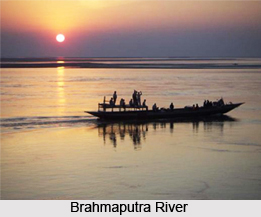History of Morigaon District has not been fully explored yet. Arimatta is a well known traditional ruler of this region. The history of this ruler is also unknown. Jongalbalahu, the son of Arimatta, took over his throne after his death. Jongalbalahu was later killed by the Kacharis, near Kajalimukh, using a bamboo spear. Legends say that, to save himself Jongalbalahu got submerged in Kollong River and emerged at Raha for quenching his thirst. He then dived again and emerged at Jagi. The places Raha and Jagi take their name from this incident.
 History of Morigaon district and its adjacent areas has been deciphered to some extent by the writing of Bhimsingh. Six rulers independently ruled over the region. During this era, two princes belonging to Darrang namely Makardhvaj and Supradhvaj fled away from their land owing to some internal clash. They crossed the Brahmaputra River and settled at Bahakajari. Supradhvaj later married the daughter of the king of Baghara, Mangalsingh. Supradhvaj was then coronated as the seventh king of this region and was given a separate kingdom of his own.
History of Morigaon district and its adjacent areas has been deciphered to some extent by the writing of Bhimsingh. Six rulers independently ruled over the region. During this era, two princes belonging to Darrang namely Makardhvaj and Supradhvaj fled away from their land owing to some internal clash. They crossed the Brahmaputra River and settled at Bahakajari. Supradhvaj later married the daughter of the king of Baghara, Mangalsingh. Supradhvaj was then coronated as the seventh king of this region and was given a separate kingdom of his own.
During the period of Lachit Borphukan, another two princes namely Bhimsingh and Ram Singh, belonging to Darrang had crossed Brahmaputra River to search for plain lands. The settlement of Bhimsingh was followed by the return of Ram Singh for his homeland. Bhimsingh could never be liked by the local folks and hence moved and settled in Mori Beel. This place later came to be known as Morigaon.
Morigaon acquired the status of a district on 29 September 1989, after its separation from Nagaon district.
This article is a stub. You can enrich by adding more information to it. Send your Write Up to content@indianetzone.com



















